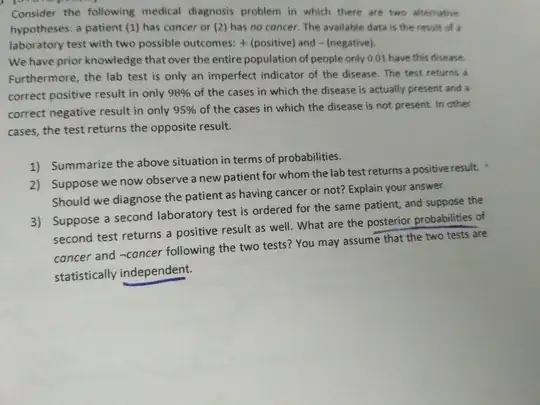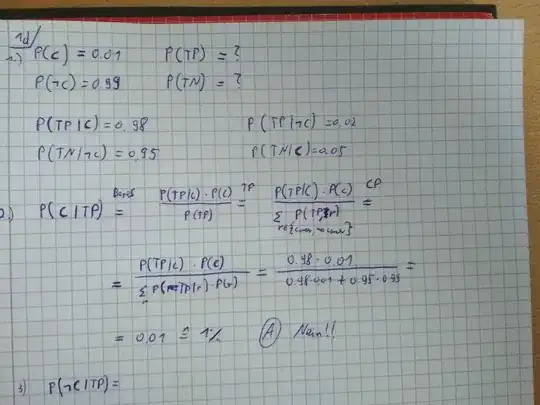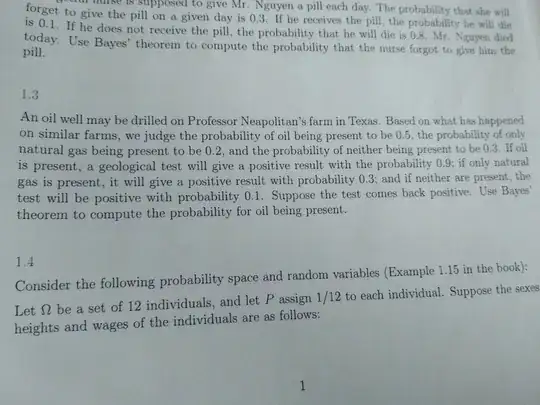I got a question, that i could need some help with. Below you see the picutres
The following is given: A patient can have cancer, or not. There is a test, that has two outcomes: Positive, or negative. The prior prob. over all population, that a person has cancer is 0.01. The test returns positive outcome with prob. of 0.98, where the person has indeed cancer and negative with 0.95 where the person has NOT cancer. So far, so good.
1) I should summarize the above in terms on probabilities. That is my solution: P(C) = 0.01; P(not C) = 0.99 P(TP|C) = 0.98; P(TN|not C) = 0.95
2) A patient gets tested, and the test is positive. Do we tell this patient, he has cancer? I calculated P(C|TP) and got a solution value = 0.01 being 1%. Which means for me, we don't tell him, as there is only 1% chance, that he has cancer.
3) The patient gets testet again! Both tests are independent to each other. And i should calculate the "posterior probability" of cancer and not cancer following the two tests.
And here, for 3) i am lost a bit. I would now calculate just P(not C|TP) as i did in 2). But is that actually correct? If not, what should i calculate instead and how?
And for reference, a similar excercise, we discussed. The solutions are said to be correct for the next 2 pictures. I was trying to apply the same methods. But for Task 3) i am unsure, how to solve it.



